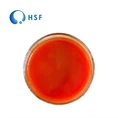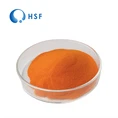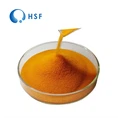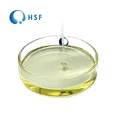According to HealthFocus International, reducing sugar intake is the first dietary change consumers make, and in consumers' minds, the best way for food and beverage manufacturers to make their products healthier is to reduce sugar. The discovery and application of "Allulose" may become a major breakthrough in the sugar reduction product market.
What is Allulose
When it comes to sugar substitutes, people often think of erythritol, stevia, mogroside, xylitol, maltitol... In addition to these sugar substitutes, there is also a natural sugar substitute in nature, and its content is extremely rare, but it has very broad market application prospects, It is Allulose.

D-Allulose (psicose) is an epimer of fructose and a rare monosaccharide that exists in nature but in very small amounts. Allulose was first discovered in 1940 in wheat leaves. Since then, small amounts of allulose have been found in some fruits (such as figs, raisins, kiwis), maple syrup, and brown sugar. Its physical properties are basically similar to ordinary sucrose, such as volume, taste, browning ability, and freezing point. Is an ideal sucrose substitute.
- High sweetness, low calories
The sweetness of allulose is about 70% of sucrose, but the glycemic index (GI value) and calories are only 1/10 of sucrose, and the heat is 0.4kal/g. After most of the allulose enters the human body, it is directly excreted through urine or feces. After intestinal absorption, it is almost not metabolized and does not provide calories. This is also its outstanding advantage.
- Tastes close to sucrose
In terms of taste, allulose has a soft and delicate sweetness, a pure sweetness that is very similar to high-purity sucrose, and the initial stimulation of taste buds is faster than that of sucrose. There is no bad taste during or after consumption. Moreover, the sweetness does not change with temperature, and pure sweetness can be expressed at various temperatures.
- Stable properties
Allulose has stable structure and properties, strong chemical inertness, and can adapt to acidic or alkaline environments; it produces a large amount of antioxidant components during the saccharification reaction, which can reduce oxidative losses and improve product quality during product processing and storage.
Allulose is recognized for its health properties
Allulose is widely regarded as a promising functional ingredient with multiple beneficial physiological functions. For decades, people have conducted in-depth research on the physiological functions and corresponding mechanisms of D-allulose, proving that D-allulose has a positive impact on blood sugar control, weight control, nerve protection, etc.

- Research on allulose in controlling blood sugar
Studies have found that allulose has a better ability to lower postprandial blood sugar levels than well-known dietary fiber raw materials. In addition, in a controlled study, subjects received 7.5 grams of D-allulose alone, 75 grams of maltodextrin, and 75 grams of maltodextrin + 2.5, 5, and 7.5 grams of D-allulose. The study found that at doses of 5 g or more of D-allulose, increases in blood glucose and insulin concentrations were significantly suppressed; Blood glucose and insulin levels were significantly lower with allulose compared with maltodextrin only.
- Research on Allulose in Weight Control
A study published in Food Funct analyzed the effects of allulose on fat metabolism in Wistar rats. The rats were divided into five groups, randomly supplemented with glucose group, fructose group, fiber group, D-allulose group and control diet group. The study found that the rats in the D-allulose group had the lowest weight [5]. In another study, rats were fed a high-sugar diet containing either 5% fiber or 5% D-allulose and found that rats in the D-allulose group consumed more fat overnight. The results indicate that D-allulose can control and maintain healthy weight by enhancing energy metabolism.
- Research on the neuroprotective effects of allulose
Experimental results show that 50mM D-allulose can inhibit the apoptosis of catecholaminergic PC12 cells induced by the neurotoxin 6-hydroxydopamine by increasing intracellular glutathione levels, thus playing a neuroprotective role.
Regulations regarding allulose

Currently, with its high-quality physical and chemical properties and health attributes, allulose is being accepted by more and more countries.
2012: The FDA (U.S. Food and Drug Administration) officially certified the safety of D-allulose and began to allow its use as a dietary additive and food ingredient;
2019:The FDA announced that it will exclude the low-calorie sweetener allulose from the "added sugar" and "total sugar" labels. From now on, it will no longer need to calculate its added amount in these two categories. At the same time, the caloric value of allulose is set at 0.4 kcal/g. This announcement means that the restrictions on the use of D-psicose will be further relaxed on the original basis;
2020: Japan's Ministry of Health, Labor and Welfare (MHLW) approved psicose epimerase as a food additive;
2021: The MHLW of Japan issued a notice to amend the Food Hygiene Law Implementation Rules and Specifications and Standards for Food, Additives and proposed to add allulose to the list of allowed additives;
2022: Australia and New Zealand approved D-allulose as a food additive, allowing the use of Microbacterium foliorum SYG27B-MF containing psicose 3-epimerase to enzymatically convert fructose into D-allulose to produce D-allulose Rotulose.
So far, many countries around the world have authorized allulose as a usable food ingredient, including Japan, Mexico, Singapore, South Korea, and the United States. In addition, allulose has obtained FEMA's GRAS safety certification and can be used as a food flavor in beverages and dairy products to adjust flavor and taste. The approval of regulations has boosted its popularity in the global market. Currently, allulose is mainly used in products such as prepared milk, flavored fermented milk, pastries, tea drinks, and jelly.
Be the first to lay out the allulose market
Whether it is the pursuit of inner health or outer beauty, sugar reduction is becoming a common demand among consumers of all ages. Consumers are reducing their sugar intake to promote good health. Competition in the sugar reduction market will surely become more intense in the future, and there will be more competition in the innovative development of sugar-reduction foods.
Facing the next rising "star" in the sugar substitute industry, taking the lead in R&D and arranging production capacity will naturally make it easier to occupy the future market high ground.
With keen market insight, HSF Biotech complies with the development trend of health and sugar reduction and has been preparing for the application of high-quality sugar substitutes represented by allulose in the international market.
Our allulose products have high purity, uniform particles, and pure sweetness. They can be widely used in food, beverages, and health foods, providing customers with new high-quality sugar reduction application options.
With the concept of "Innovation serves a better life", HSF Biotech is committed to the development and expansion of healthy sugar resource products. Our main products are isomaltooligosaccharide, resistant dextrin, psicose, erythritol, and other products. Customize personalized multi-category special health ingredients to lead a new concept of healthy food consumption.
For more details, please contact us: Email: sales@healthfulbio.com
Whatsapp: 18992720900





